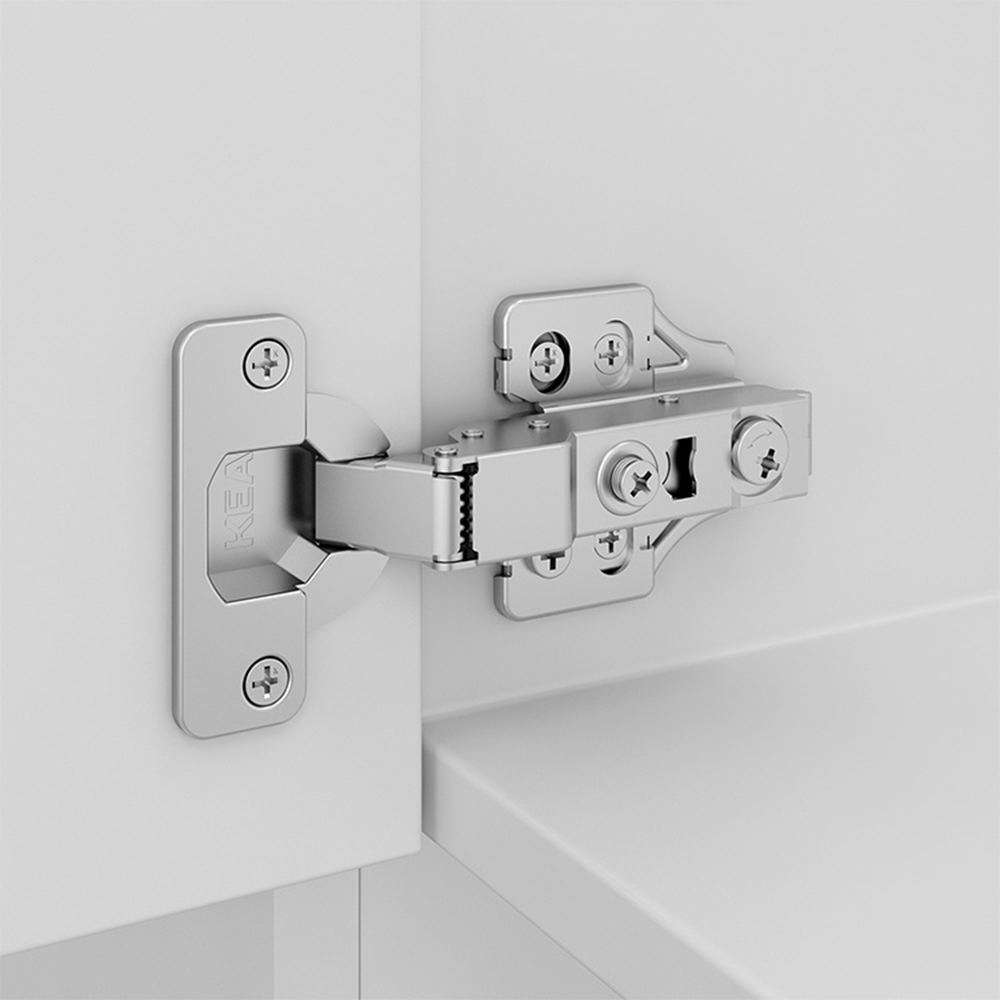The hinges of cabinet doors may seem insignificant, but they are crucial to the functionality and appearance of the cabinets. The right hinges can ensure the smooth operation, precise alignment and aesthetic appearance of cabinet doors. However, incorrect hinges can cause the door panel to be noisy, uneven or misaligned. Whether you are renovating existing cabinets or installing new ones, it is crucial to understand the types, functions and installation methods of hinges.
Types of Cabinet Hinges
There are various types of cabinet door hinges, and each type is suitable for specific applications and cabinet styles.
1. Flat Hinge
The flat hinge is one of the most traditional types of hinges, composed of two rectangular metal plates connected by pins. They are visible when the door is closed and are usually used in framed cabinets. Although they are sturdy and durable, their obvious visibility means they are usually used in more traditional or rustic designs.
2. Concealed Hinge
Hidden hinges are very popular in modern cabinets because they are out of sight when the cabinet doors are closed. They are also known as "cup-shaped hinges", installed inside the cabinet and can be precisely adjusted in multiple directions. They are usually used in frameless cabinets and have a simple and smooth appearance.
3. Covering Hinge
The covering hinges are specifically designed for cabinet doors that are installed on top of the cabinet frame rather than inside the frame. They are divided into full coverage type (covering most of the frame) and semi-coverage type (two doors share one partition). This type of hinge is highly suitable for modern designs that pursue a smooth and continuous cabinet surface.
4. Embedded Hinge
When the cabinet door is flush with the opening of the cabinet frame, please use built-in hinges. Depending on the style, these hinges can be partially visible or hidden, creating a fashionable embedded appearance. Because embedded doors need to be precisely aligned, extra care should be taken when installing such hinges.
5. Exposed Hinges
Exposed hinges are directly installed on the surfaces of doors and cabinets without mortises or cup holes. It is easy to install and offers a variety of decorative styles.
6. Buffer Hinge
Buffer hinges represent a modern upgrade of traditional designs. It adopts an internal damping device to prevent the door from closing suddenly and instead closes gently and quietly. This extends the service life of the cabinets by reducing the impact force.

Functions and Features
Hinges not only fix the door to the cabinet but also determine how the door opens, closes and aligns. The opening angle (usually between 90° and 165°) will affect accessibility. Hinges with a large opening angle are very suitable for corner cabinets or situations where full access to the interior of the cabinet is required.
Adjustability is another key feature. Most hidden hinges offer three-way adjustment functions - up and down, left and right, and inside and outside, allowing for easy and perfect alignment with the door even after installation.
The material of the hinge is also very important. Stainless steel hinges are corrosion-resistant and are ideal for damp environments such as bathrooms and kitchens, while brass or bronze finishes complement traditional aesthetics.
Installation Tips
Proper installation of hinges can ensure smooth opening and closing of cabinet doors and maintain good alignment for a long time. Before installation, it is necessary to plan the type of door first - whether it is concealed, recessed or full coverage. Different types of doors require different hinge installation positions and styles. Determining these in advance can prevent rework and alignment problems later on.
Consistency is of vital importance during the installation process. Using hinge templates or drilling fixtures can help ensure that the position of each hole is precise and the spacing is consistent, especially when installing multiple doors.
When installing, it is recommended to first fix all hinges with an appropriate tightness, and then check the alignment of the door and the uniformity of the gap. After confirming that there are no errors, tighten the screws completely.
Conclusion
Cabinet door hinges are one of the most important components in any cabinet system. Choosing the right type of hinge can ensure its smooth performance, durability and style that complements your design. Whether you prefer traditional exposed hardware or modern concealed hinges, understanding their functions and installation methods will help you create a professional look and long-lasting effect.